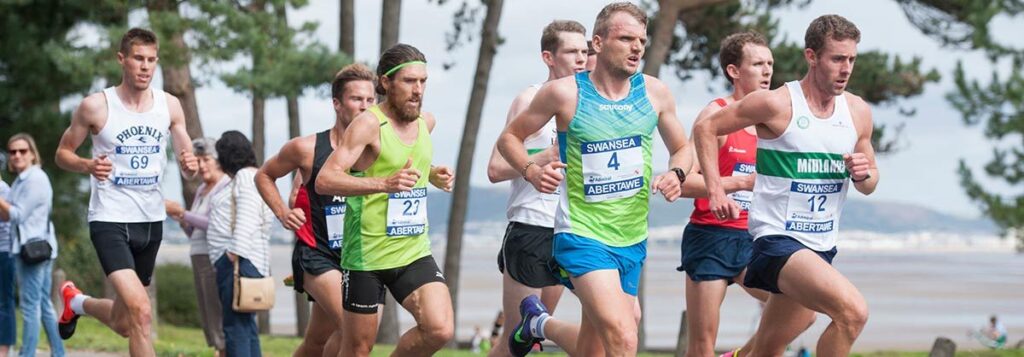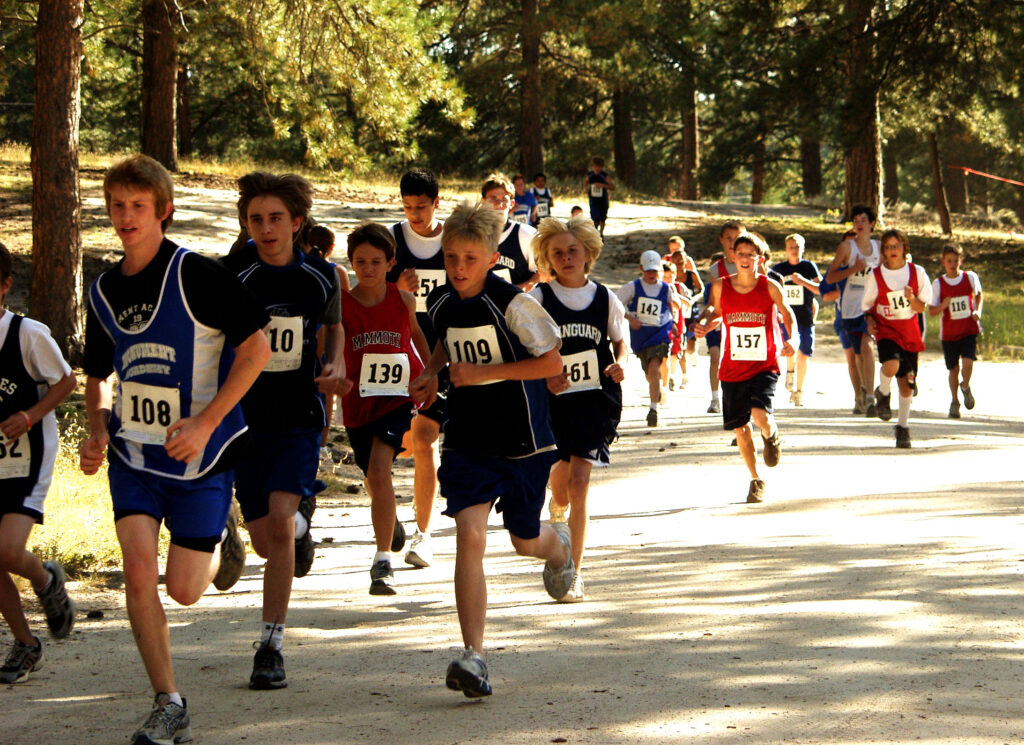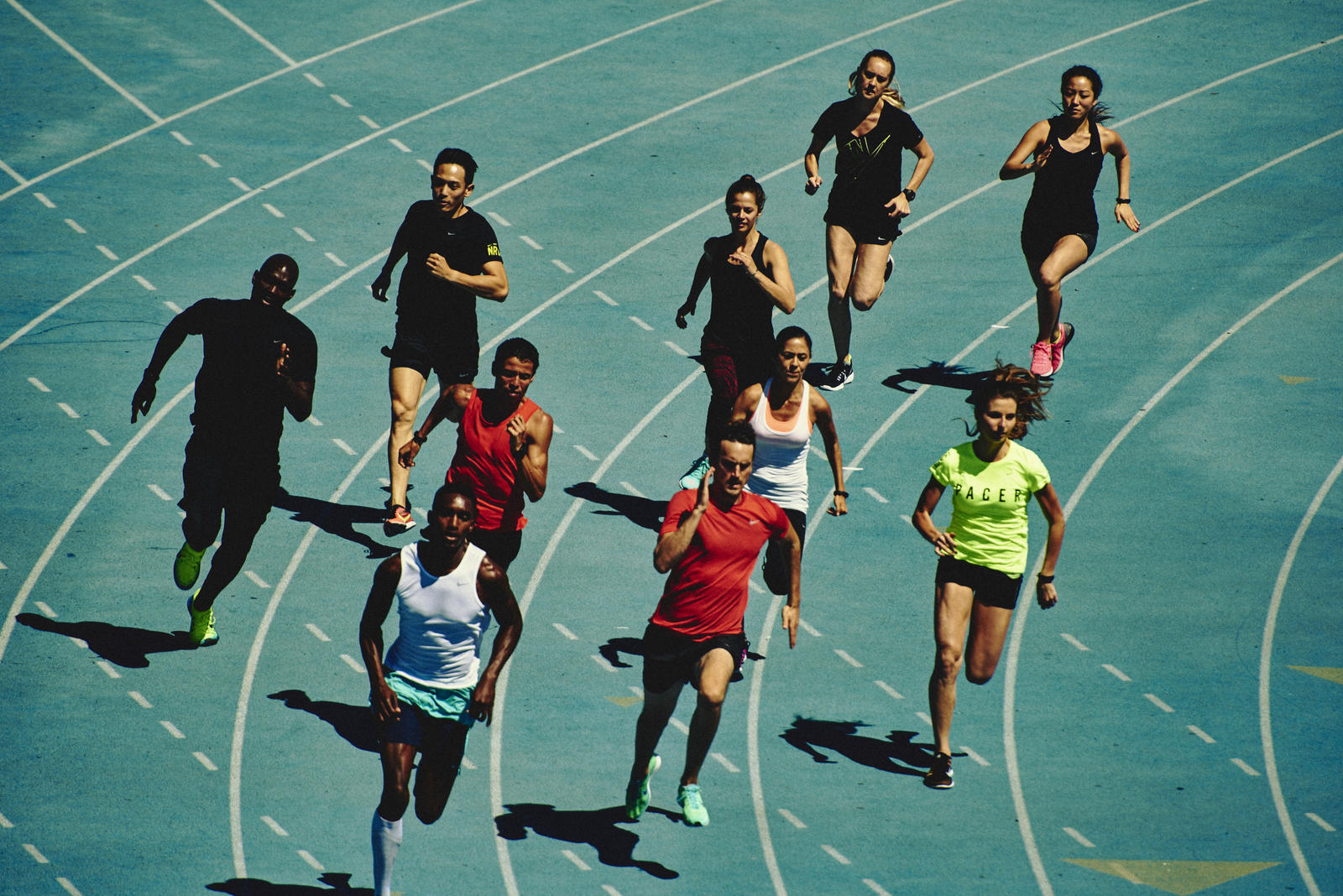Table of Contents
Running clubs have evolved over the years, providing a community for those with a passion for the sport and recreational activity of running. From their humble beginnings to their current prominence on social media, running clubs have served as essential platforms for individuals to connect, motivate, and challenge one another, while fostering a sense of camaraderie and support.
The history of running clubs can be traced back to ancient times, with the Greek concept of “gymnasion” – a place to train and exercise in the pursuit of physical fitness. These ancient athletic institutions laid the groundwork for the modern running clubs we see today. As running gained popularity in the 20th century, the emergence of formal organizations like the Road Runners Club of America (RRCA) in the 1970s played a crucial role in furthering the growth and development of running communities.
One of the reasons behind the continued success and popularity of running clubs lies in their ability to adapt to the changing landscape of fitness and social interaction. The widespread adoption of the internet has given rise to online running clubs, allowing runners from around the world to connect and share their experiences while participating in a sport they love. With a focus on inclusivity and encouragement, running clubs have become an integral part of the global running community.

Historical Origins of Running Clubs
Ancient Greece and Pheidippides
The history of running clubs can be traced back to ancient Greece, where the sport of running initially gained prominence. The earliest recorded running event took place in 776 B.C.E, during the first Olympic Games in the town of Olympia, which featured only a race called the stadion race. These games were held in honor of the Greek God, Zeus.
Another significant figure in the history of running is Pheidippides, a Greek runner who is said to have run from Marathon to Athens in 490 B.C.E, to deliver news of a military victory. The legend of Pheidippides is widely considered as the inspiration behind modern marathon races.
Modern Olympics and the Evolution of Running Clubs
The origin of modern running clubs can be attributed to the resurgence of the Olympic Games in 1896, where running events like sprints, middle-distance, and long-distance races were reintroduced. This marked the beginning of a more structured approach to running as a sport, which paved the way for the establishment of running clubs.
Running clubs have evolved significantly since the early days of the sport. Initially, these clubs were born out of a shared passion for running and focused on races and competitions. Over time, running clubs have diversified to cater to different abilities, ages, and preferences.
In the early 2000s, alternative running clubs or crews began gaining popularity, mainly focusing on urban running on city streets. One such example is the Bridge Runners crew in New York City, which was formed by Mike Saes in 2004.
Today, running clubs exist in various forms and continue to evolve, catering to different needs and incorporating modern training methods and technologies. The history of running clubs reflects the ongoing adaptability and passion for running that has existed since ancient times, maintaining its presence in the modern era.
The Running Boom and its Influencers
Arthur Lydiard and Bill Bowerman
Arthur Lydiard, a New Zealand running coach, was a significant influencer in the development of the running boom of the 1970s. He developed a training system based on high-mileage and endurance, which helped to produce many successful athletes, including Olympic medalists Peter Snell and Murray Halberg. His techniques spread worldwide, shaping the way modern long-distance running is approached.
American track and field coach, Bill Bowerman, also played a key role in the running boom. Co-founder of Nike, Bowerman helped popularize jogging as a form of exercise, introducing it to many American households. He co-wrote the book, “Jogging,” which emphasized the importance of physical fitness for people of all ages and fitness levels.
Frank Shorter and Joan Benoit
Olympic marathoner Frank Shorter greatly influenced the running boom as well. His victory in the 1972 Munich Olympics brought attention to long-distance running, making it more popular among both elite and recreational runners. Shorter’s performances inspired many people to take up the sport and fostered the growth of road races.
Joan Benoit, an American marathon runner, broke barriers for women in the sport. Her win in the inaugural women’s Olympic Marathon in 1984 not only popularized marathons for women but also paved the way for more opportunities for female athletes in road races.
Jimmy Carter and Public Influences
Jimmy Carter, the 39th president of the United States, was an avid runner who significantly contributed to the running boom. His love for the sport and commitment to fitness popularized running among fellow Americans. Carter often participated in races and running events, encouraging the development and growth of the road running culture.
Notable Running Clubs
New York Road Runners Club
The New York Road Runners Club was established in April 1958 with twenty-nine members. This club has a rich history, as its first president, Ted Corbitt, served in his role during 1958 and 1959. The club focuses on organizing running events and promoting the sport in the New York area.
Road Runners Club of America
The Road Runners Club of America is one of the oldest distance running traditions in the U.S. The RRCA Championship Event series is held throughout the country, and the organization has inducted notable individuals into their Distance Running Hall of Fame since 1971.
Cambridge Running Club
The Cambridge Running Club focuses on promoting running and providing guidance for members looking to improve their performance. This club has a strong community where members support each other in achieving their goals.
Reston Runners
Reston Runners is a club based in Reston, Virginia and aims to promote running and walking as healthy activities. They focus on fostering a sense of community and offer various events and programs to engage their members.
Columbia Track Club
The Columbia Track Club was founded in the 1960s in Columbia, Missouri. They have organized events like marathons and have always been committed to promoting distance running. The club offers training programs for members looking to improve their skills.
Santa Fe Striders
The Santa Fe Striders, based in Santa Fe, New Mexico, are focused on promoting running as a sport and encouraging healthy lifestyles. They organize group runs and participate in various running events to engage their members and the community.
Lincoln Running Club of Lincoln, NE
The Lincoln Running Club (LRCN) is based in Lincoln, Nebraska, and is dedicated to fostering a community of runners through organizing events, group runs, and providing resources to support its members in achieving their running goals. The Lincoln Running Club is housed out of the Lincoln Running Company.

Impact on Sports, Fitness, and Society
Running has had a significant impact on sports, fitness, and society throughout history. Early races, like the stadion race in ancient Olympic Games, laid the foundation for modern distance running competitions such as marathons and cross-country events. The introduction of organized running clubs and events further propelled the sports’ popularity, with races like the Boston Marathon, Chicago Marathon, and Philadelphia Marathon gaining international recognition.
Running clubs and marathons have played a critical role in promoting fitness and healthy lifestyles. They encourage regular exercise, with many people participating in jogging and distance running to maintain their physical health. The popularity of running shoes and apparel demonstrates the impact of the sport on society, as people invest in proper gear for their workouts.
Running has also fostered a sense of community and camaraderie, as participants often train together and support one another. Races like the Boston Marathon, organized by the Boston Athletic Association, bring people from various backgrounds and countries together, promoting inclusivity and a shared love for the sport. Furthermore, running clubs at universities, such as the Massachusetts Institute of Technology (MIT), provide students with a way to engage in physical activity and connect with their peers in a fun and dynamic environment.
In addition to the fitness aspect, running events often have strong ties to charitable organizations and fundraising efforts, as well. Many marathons serve as platforms for raising awareness and funds for various causes, creating a positive impact on local, national, and global communities. For example, runners participating in the Boston Marathon often fundraise for a wide range of charities, from medical research to support for the homeless.
Running clubs and marathons have also influenced the growth and development of organized sports. As the sport evolved, specialized coaching and training methods were developed to help athletes optimize their performance in distance running events. This has led to numerous advancements in sports medicine and exercise, benefiting athletes in a wide range of disciplines.
Overall, the history of running clubs showcases the undeniable influence of running on both sports and society at large. From promoting fitness and healthy lifestyles to fostering a sense of community, the sport of running has left an indelible mark on the world we live in today.

Role of Coaches and Equipment
Running Shoes and Apparel Innovations
Over the years, coaches and equipment have played a critical role in the advancement of running clubs and the athletes they serve. One of the most significant innovations has been improvements in running shoes and apparel. Companies like Nike have revolutionized the running industry with their advanced shoe technology and comfortable, performance-driven clothing.
The evolution of running shoes has enabled athletes to run more efficiently, prevent injuries, and optimize their performance. Some of the key advancements in running shoes include cushioning, support, and grip, which have all contributed to better running experiences for athletes at every level.
Additionally, running apparel has seen numerous advancements that have made it more comfortable, breathable, and functional for runners. These innovations have not only helped enhance athletic performance but also enabled more people to participate in running sports.
Prominent Coaches and Training Philosophies
Running clubs have been the cornerstone of the running community for decades. A key factor that has contributed to their success is the expertise of their coaches. These professionals understand the importance of training programs tailored to individual needs, as well as the need for a supportive and motivating environment.
Many prominent running coaches have had a significant impact on the sport, employing various training philosophies to adjust to athletes’ individual needs. For instance, elite coaches like Jack Daniels and Arthur Lydiard have developed unique coaching styles and training methodologies that have benefited countless athletes at different stages of their running careers.
Jack Daniels, a renowned exercise physiologist, focuses on scientific principles and individualized training plans to help athletes reach their full potential, while Arthur Lydiard, a New Zealand-based coach, emphasized aerobic conditioning and periodized training to improve athletes’ performance.
These coaches and others alike have been instrumental in the growth and success of running clubs, guiding them to achieve their goals and foster a love for the sport. With their expertise, they have helped athletes overcome challenges, improve their skills, and become part of the larger running community.
In conclusion, the development of running clubs has been significantly influenced by advancements in coaching knowledge and equipment innovation. The synthesis of these elements has empowered athletes to reach new heights in performance and fostered a strong sense of camaraderie and sportsmanship within the running community.
Effects of Altitude and Geography
High-Altitude Training in Mexico
High-altitude training has long been a popular method among endurance athletes to improve their performance. One famous location for such training is Mexico, which offers a variety of high-altitude locations. The significant factor in altitude training is the reduced amount of oxygen in the air, which can lead to physiological adaptations that benefit athletic performance when returning to lower altitudes source.
During high-altitude training, athletes can experience shortness of breath, as their lungs must work harder to deliver oxygen to the bloodstream. Acclimatization to these conditions can take days or even weeks, but the benefits can be substantial source.
New England
New England boasts a diverse geography, with rolling hills, mountains, and beautiful coastlines. This diversity offers a unique opportunity for running clubs in the region to incorporate varied workouts and training environments. The hills and elevation changes help to develop strength, while the coastal areas may offer cooler temperatures and scenic views that can be motivating and enjoyable.
The region’s seasonal weather variations also contribute to the training experience, with runners facing the challenges of cold winters and hot summers. Adapting to these changing conditions helps athletes to build mental toughness and resilience, making them better prepared for race day.
Atlanta Track Club
The Atlanta Track Club, founded in 1964, is one of the largest running clubs in the United States, hosting numerous events and offering programs for athletes of all levels. The club is headquartered in Atlanta, Georgia, which though not a high-altitude location like Mexico, poses its own unique geographic and climatic challenges for runners.
With its warm and humid climate, Atlanta presents a different set of physiological demands for athletes. Training in these conditions can help runners build heat tolerance and improve their ability to manage hydration and electrolyte balance during races. Additionally, the city’s hilly terrain offers an opportunity for strength and endurance development that complements the club’s training programs.
In conclusion, geography and altitude play crucial roles in shaping the training environments and opportunities for runners. From high-altitude training in Mexico to the varied terrain of New England and the hot and humid conditions in Atlanta, athletes can benefit from adapting to these diverse conditions and challenges to improve their performance.
Running Clubs and Public Schools
Public schools have played a significant role in the development and spread of running clubs. Since the early years of organized sport and physical education in schools, running has been a cornerstone activity. Incorporating running clubs into public schools helps to promote physical fitness, teamwork, and the spirit of competition among students.
One notable example of a running club with ties to a public school is the Checkers Athletic Club. The club, founded in Buffalo, New York, was able to attract many former runners from St. Joe’s High School due to its proximity to the school and the involvement of Matt Hellerer, a key figure in the club’s establishment. The Checkers Athletic Club has since grown to include runners of all skill levels, demonstrating the enduring impact of public schools in fostering athletic talent and community engagement. More information on the club’s history can be found here.
In many public schools, running clubs offer students the opportunity to participate in a structured, supportive environment. Coaches and organizers within these clubs often work closely with school faculty and administrators to ensure a safe and inclusive experience for all participants. This collaboration helps to instill a lifelong love of the sport while promoting the health benefits of regular physical activity.
Additionally, running clubs in public schools provide a valuable opportunity for students to compete in local, regional, and national events. Organizations such as the Road Runners Club of America (RRCA) have played a pivotal role in the growth and organization of such competitions. The RRCA has been at the forefront of distance running since its inception in 1958 and continues to support and guide local clubs throughout the United States.
Public schools have significantly contributed to the rich history and development of running clubs. By offering students the opportunity to participate in organized running programs, public schools foster physical fitness, personal growth, and a sense of community that extends far beyond the school environment.
Running Clubs During COVID-19
The COVID-19 pandemic had a significant impact on the running community, including running clubs. With social distancing measures and stay-at-home orders, many clubs had to adapt or completely halt their activities.
During this time, running saw a boom as an accessible form of exercise, with new research from Nielsen revealing that runners increased their participation due to the pandemic. The closure of gyms and other indoor exercise facilities led people to seek outdoor alternatives, and running became a popular choice.
Running clubs faced the challenge of incorporating health and safety measures into their activities. Many shifted to virtual events, using technology to maintain social connections and motivation while adhering to public health guidelines. Some clubs organized virtual races or challenges to keep their members engaged and motivated.
The pandemic also led to a shift in motivations for running. Instead of focusing solely on competitive achievement, people began to prioritize running for mental and physical health benefits. This change in perspective influenced the way running clubs approached their activities, placing more emphasis on overall well-being and stress relief.
While adapting to the COVID-19 pandemic, running clubs demonstrated their resilience and creativity in ensuring the continuity of their activities. By embracing technology and prioritizing health and well-being, they have continued to serve their members and foster a strong running community.


4 thoughts on “History of Running Clubs: Evolution and Impact on Fitness Culture”